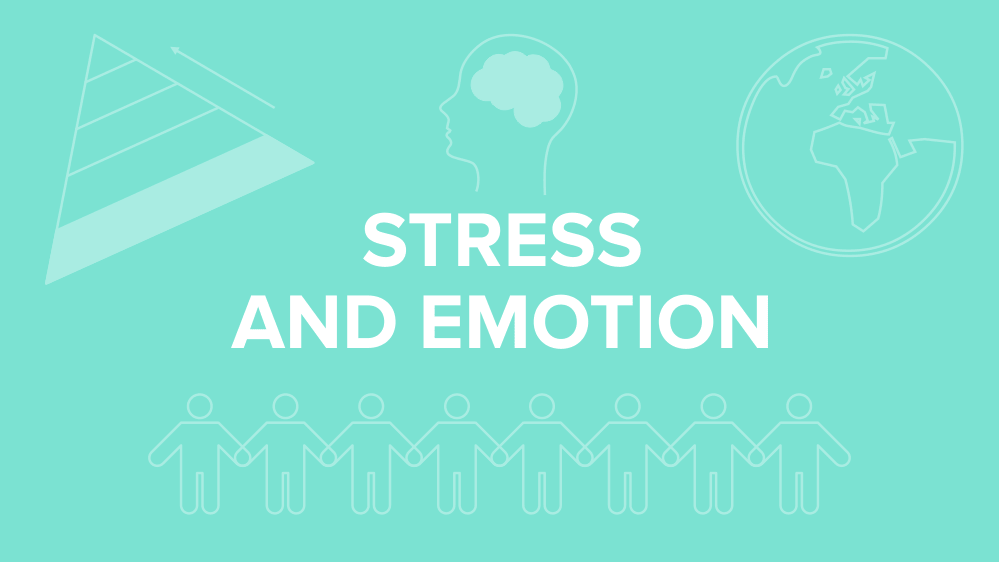Stress and Emotion for the MCAT: Everything You Need to Know
/Learn key MCAT concepts about stress and emotion, plus practice questions and answers
(Note: This guide is part of our MCAT Psychology and Sociology series. )
Table of Contents
Part 1: Introduction to stress and emotion
Part 2: Stress
a) Origins of stress
b) Physiological response
c) Managing stress
Part 3: Emotion
a) Roles of emotion
b) Theories of emotion
c) Biological components
Part 4: High-yield terms
Part 5: Passage-based questions and answers
Part 6: Practice standalone questions and answers
-----
Part 1: Introduction to stress and emotion
Emotion and stress are high-yield topics that will earn you significant points on the Psychology/Sociology section of the MCAT. This guide will give you a thorough understanding of the physiological and behavioral reactions that human beings experience.
Throughout this guide, there are several bolded terms related to emotion and stress that are important to know. To get the most out of this resource, we encourage you to review these terms more closely and to generate definitions for them that make sense to you. In the last two sections, we have provided both passage-related and standalone questions similar to those you might find on the MCAT.
Let’s begin!
-----
Part 2: Stress
Stress is a feeling in response to a disconcerting situation. However, it is an experience that is far more difficult to communicate with others. It is also important to remember that stress is usually caused by combinations of environmental factors and thus can usually be controlled through lifestyle management.
Stress itself can be categorized as distress, which causes negative emotions, or eustress, which causes positive emotions. Examples of eustress include exercising to release endorphins or spending time on a creative or artistic project.
a) Origins of stress
Stress is the result of a stressor, which is a distressing stimulus or event. A stress reaction is a person’s response to the stressor.
Our appraisal is the way that we interpret the stressor. Primary appraisal refers to our interpretation of the immediate stressor—for instance, the recognition of a car speeding toward a pedestrian—and our determination of the threat, while secondary appraisal is the assessment of actions that can be taken in response to the stressor.
There are three main types of stressors: daily stressors, life events, and catastrophic events.
Daily stressors are minor hassles in everyday life, such as interpersonal disputes or financial stress
Life events are significant changes in one’s personal life, like moving houses or the death of a loved one
Catastrophic events are large-scale happenings that are outside of an individual’s control, such as natural disasters or wars.
Each of these types of stressors causes a reaction in the person experiencing them but varies in acuity and intensity.
b) Physiological response
Physiological response to a stressor is primarily driven by the autonomic nervous system.
The autonomic nervous system is broken down into two main components: the sympathetic nervous system and the parasympathetic nervous system. The sympathetic nervous system is responsible for our “fight-or-flight” response. This response prompts an endocrine response in which the adrenal medulla releases the hormones epinephrine and norepinephrine. These hormones prompt an increase in heart rate, blood flow to the skeletal muscles, and other responses that prime the body for quick action. In response, the adrenal cortex also releases cortisol, a steroid hormone that suppresses the immune system and utilizes energy from fat instead of glucose. Though our bodies can handle short-term stress, chronic stress can lead to hypertension (high blood pressure), an impaired immune system, and damaged reproduction in women.
In contrast, the parasympathetic nervous system is responsible for our “rest-and-digest” state. When the body is at rest, this system makes the digestive system more active and reduces blood flow to skeletal muscles.
The Yerkes-Dodson Law states that elevated levels of stress and arousal improve performance up to a point. However, beyond the optimal point of arousal, our performance decreases. The distribution of performance by arousal follows a bell-shaped curve.
Figure: The Yerkes-Dodson law states that we exhibit peak performance when experiencing average arousal and stimulation.
Gain instant access to the most digestible and comprehensive MCAT content resources available. 60+ guides covering every content area. Subscribe today to lock in the current investments, which will be increasing in the future for new subscribers.



